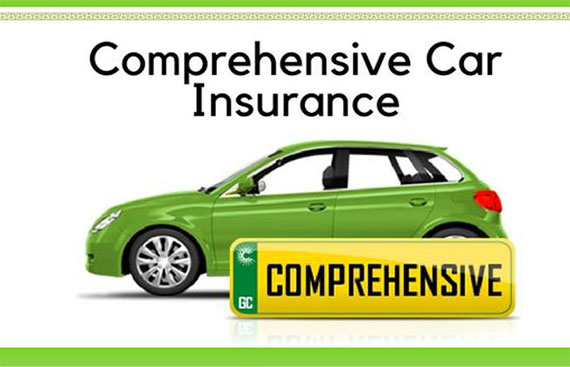Comprehensive Insurance Explained: What Does It Really Cover?

Owning a vehicle comes with its share of worries. Beyond the fear of accidents, there's the concern about what might happen when your car is parked or during everyday activities. What if it gets stolen? Or vandalised? What if a tree falls on it during a storm? These worries can keep any vehicle owner up at night. A comprehensive insurance removes all these worries.
Unlike basic collision coverage, comprehensive coverage steps in to protect your vehicle from a wide range of non-collision-related risks. In this article, let's break down what comprehensive protection covers and why it's essential for anyone who wants peace of mind on the road.
Comprehensive Coverage: What's Included?
Comprehensive insurance for vehicles is a critical component for any car owner looking to protect their investment from non-collision-related incidents. Below are ten points that detail what is typically included in a comprehensive auto insurance policy:
- Theft: Coverage for the loss of the vehicle as well as damages from attempted theft.
- Vandalism: Protection against deliberate damage inflicted on your vehicle, such as keying and graffiti.
- Fire: Financial protection against vehicle damage due to fire, including those caused by mechanical or electrical faults.
- Natural Disasters: Coverage for damages from natural events like earthquakes, floods, hurricanes, and tornadoes.
- Falling Objects: Compensation for damages caused by objects that fall onto your vehicle, such as tree branches or debris.
- Collision with Animals: Covers repair costs if your vehicle hits an animal or if an animal runs into your vehicle.
- Glass Breakage: Includes repair and replacement of windows and windshield not caused by a collision.
- Weather Damage: Protection against various weather-related damages, including hail, storm, or snow damage.
- Civil Disturbances: Covers damages caused by riots or other civil disturbances that might damage your vehicle.
- Damage During Transport: Provides coverage for damages that occur while your vehicle is being transported, whether by train, truck, or other means.
Comprehensive insurance provides extensive financial security for vehicle owners. It offers complete peace of mind for vehicle owners.
Renewal and Upkeep | A Crucial Aspect To Pay Attention To
Moving on from the basics of comprehensive insurance, it's important to consider specific needs, such as those related to renewing vehicle insurance. Car or two wheeler insurance renewal is a simple yet vital step in managing your vehicle's insurance coverage.
Renewal time also offers an opportunity to reassess your coverage needs and make adjustments to your comprehensive policy. This way, you can make sure the insurance continues to meet your evolving requirements.
Exclusions and Limitations of Comprehensive Coverage
While comprehensive protection offers extensive coverage, it's essential to note that it doesn't cover every possible scenario. Standard exclusions often encompass damages resulting from normal wear and tear, mechanical failures, and intentional damage caused by the policyholder.
Therefore, it's crucial for consumers to thoroughly review their policy documents to understand the exclusions and limitations, ensuring they are fully aware of what their insurance does not cover. This awareness empowers policyholders to make informed decisions and take necessary precautions to address any gaps in coverage.
How to Choose the Right Comprehensive Insurance?
Choosing the right comprehensive protection plan for your vehicle involves careful consideration of various factors. Here are ten tips to help you select a plan that best suits your needs and provides optimal coverage:
- Know your Insurance Needs: Consider the specific risks associated with your vehicle and driving habits. If you live in an area prone to natural disasters, ensure these are covered.
- Compare Insurers: Look at multiple insurance companies to compare coverage options, prices, and customer service ratings.
- Check the Deductible Amounts: Higher deductibles can lower your premiums, but make sure you can afford the deductible in case of a claim.
- Review the Claim Process: Understand how to file a claim and the typical time it takes to settle. A smoother, faster claims process can be very beneficial during stressful times.
- Consider the Limits of Coverage: Ensure the coverage limits reflect the value of your vehicle and personal risk exposure.
- Review Policy Discounts: Inquire about available discounts, such as those for safe driving records, bundling policies, or installing anti-theft devices. Taking advantage of discounts can significantly reduce your insurance costs.
- Check Reviews and Ratings: Look at reviews and ratings from other customers and independent rating agencies to gauge the insurer's reliability and performance.
Conclusion
Comprehensive insurance is non-negotiable in today's unpredictable world, where different risks can threaten your financial stability. You get complete protection for your vehicle beyond collisions, safeguarding against theft, vandalism, natural disasters, and collisions with animals.
Gaining insight into the scope and limitations of this coverage empowers informed decisions, safeguarding assets effectively and reducing financial risks. For comprehensive and hassle-free insurance solutions, consider ACKO. Get the protection you need without any complicated paperwork in just a few clicks.
Disclaimer: Vehicle insurance is a mandatory requirement as per The Motor Vehicles Act, 1988. Non-compliance can lead to monetary penalties and legal issues. Thus, make sure to buy vehicle insurance and keep the policy active by renewing it before its expiry date. You can buy/renew vehicle insurance easily, quickly, and conveniently via the ACKO website/app for a hassle-free insurance experience.
